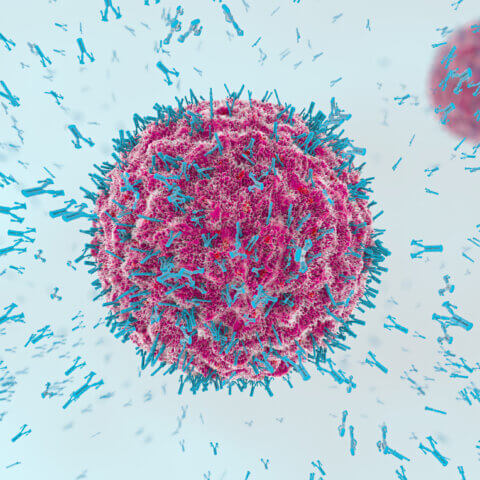Last Updated: October 9, 2024, 3 pm UTC
Cell therapy development faces significant challenges on the path from concept to clinical application. From navigating the regulatory landscape to ensuring product consistency and standardization, the initial phases of developing cell therapies require careful planning and close collaboration among cross-functional teams.
In this blog, we explore the complexities of early cell therapy development, with a focus on achieving regulatory milestones, addressing manufacturing challenges, and assuring a seamless transition to first-in-human (FIH) studies.
Challenges of Early Cell Therapy Development
Common hurdles in early development of cell therapies include:
- Meeting regulatory milestones. Due to the evolving nature of cell therapies, the regulatory landscape is constantly changing as regulators adapt to address emerging challenges and opportunities.
- Developing a consistent product that meets relevant quality and regulatory standards. It is crucial to ensure consistency and standardization of cell therapy products because they are inherently highly variable. In addition, cell therapies, like all other drugs, require extensive characterization for identity, purity, potency, quality and stability. Developing assays to reliably measure the biological activity of the cells under study conditions that mimic clinical use can be technically demanding.
- Transitioning from proof-of-concept (POC) studies to investigational new drug (IND)-enabling studies. The transition from POC to IND-enabling studies requires demonstration that the cell product can be manufactured consistently under controlled, sterile conditions, ensuring the product tested is as similar as possible to the proposed clinical product. IND-enabling toxicology studies need to evaluate a sufficient panel of endpoints to adequately assess safety of the therapeutic.
Regulatory Landscape
As with any other novel therapeutic, regulators evaluating cell therapies seek to understand what the product is, whether it is safe, and what it does. When positioning a product for discussion with FDA, it is critical to be able to describe the product and to be able to manufacture it with consistency. In most cases, early nonclinical studies will yield information supporting safety as well as the proposed indication.
For cell therapies, there is a strong regulatory emphasis on chemistry, manufacturing, and controls (CMC) because slight differences in cell characteristics can affect biological activity and, consequently, efficacy and safety. Unlike small molecules, cell therapies involve living cells which may behave unpredictably and vary from batch to batch. CMC data provide evidence that the product can be manufactured consistently at the desired scale. Detailed CMC information also helps identify potential safety issues arising from the manufacturing process, such as contamination, unintended cellular changes during culture, or inconsistencies in cell potency and purity.
Early and effective interaction with regulators helps to align early-stage development with regulatory expectations. Since the cell therapy field is evolving so rapidly, regulatory agencies are the best resource for understanding what safety aspects should be assessed, especially since they are privy to the most updated information and knowledge from similar products.
INTERACT meetings
Of note, prior to the pre-IND meeting, early interaction with the FDA is available through an INitial Targeted Engagement for Regulatory Advice on CBER producTs (INTERACT) meeting. The INTERACT meeting allows sponsors to obtain preliminary informal feedback on CMC, non-clinical, and clinical issues for innovative investigational products. The intent of this meeting is to educate the agency on a new technology or to make them aware of a planned product development pathway. While it is important for sponsors to be able to describe the characteristics and target product profile of their cell therapy, it is not necessary to have a full description of the manufacturing process or product characterization. The optimal timing for submitting an INTERACT meeting request is after obtaining proof-of-concept data but before conducting IND-enabling non-clinical studies. The INTERACT meeting feedback is valuable and considered informal and non-binding.
Manufacturing
For many cell therapy products, translating laboratory methods to larger-scale production involves transfer of technology to a contract development and manufacturing organization (CDMO). Efficient, effective technology transfer is crucial for developing a well-characterized manufacturing process.
Recent FDA guidances emphasize the importance of risk assessments in line with ICH Q9 guidance when planning a technology transfer. Such assessments inform the definition of critical material attributes (CMAs) and critical process parameters (CPPs). Typically, technology transfer begins with analytical and manufacturing knowledge transfer followed by pilot and engineering runs and eventually manufacturing in a good manufacturing practice (GMP) environment. To make the process as efficient and effective as possible, it is essential to tailor the technology transfer approach to a customized regulatory strategy. In practice, this requires the developer and the CDMO to coordinate the timing of these steps with key FDA meetings to ensure that the necessary data are available for those agency interactions.
Product characterization, comparability, and potency
With cell therapies, the process is the product and alterations in the manufacturing process can impact the final product characteristics. Consequently if a manufacturing process change is made, it is essential to perform a risk assessment evaluating the potential biological implications of that change and the potential need to perform additional in vitro and/or non-clinical studies. This risk assessment should include all aspects of the cell’s journey from the master cell bank to the container closure.
The ability to characterize the cell therapy product at every stage of development is critical for comparability of data from non-clinical studies all the way through registrational clinical studies. Key elements of any comparability program include the potency, the surface antigens used to describe the particular cell, and the ability to define the product dose in terms of cell density. Note that potency assays should ideally reflect the cell product’s mechanism of action.
Transitioning from proof-of-concept to IND-enabling studies
In the cell therapy space, the line between early proof-of-concept studies and IND-enabling studies is not clear cut. Sometimes, in vitro studies are just as important in demonstrating safety as in vivo studies. In addition, safety endpoints are often incorporated into efficacy proof-of-concept studies. Therefore, it is important to have scientific rigor in every study conducted to support a non-clinical program. Where possible, conduct the key studies under good laboratory (GL)P, or as close as possible to GLP, by utilizing a predefined protocol, performing quality assurance oversight, and providing careful documentation of all study methods and materials.
Each cell therapy development program is necessarily unique, and the characteristics of the product will dictate how safety and IND-enabling studies will be designed to generate meaningful data. It is also important to ensure selection of appropriate endpoints. The FDA has issued regulatory guidance documents outlining the expectations for cell therapy non-clinical studies. Note that clinical data on similar cell therapy products can be helpful for understanding potential adverse effects to characterize in non-clinical studies and assist in establishing first-in-human doses.
Since each program is unique, it is imperative that the contract research organization (CRO) chosen to perform non-clinical studies is adaptable and experienced in the animal model, route of administration, and the therapeutic modality. Close collaboration between the developer and the CRO is crucial for making timely decisions and ensuring that the specific needs of a study are being met.
Key Takeaway
Successful cell therapy development requires a strategic approach that is tailored to the investigational product and aligned with regulatory expectations for safety, quality, and scalability. Enabling consistent, real-time collaboration among non-clinical, regulatory, and biopharmaceutical development teams is essential for navigating the myriad complexities of early development.
At Premier, we combine strong partnerships with adaptable, knowledgeable CDMOs, our vigilance in staying up to date on evolving requirements, and our experience in engaging with regulatory agencies to streamline the path from proof-of-concept to IND-enabling studies.
To learn more about navigating the journey to FIH cell therapy studies, view our expert panel discussion.

 Webinar
Webinar 


 Perspectives Blog
Perspectives Blog 